What is Dorsalgia? If you are someone looking for more information on back pain you might have come across the word “Dorsalgia”. Below you’ll find all you need to know about it, including its types, causes, symptoms, diagnosis, and treatment. However, even before that, let’s start by taking a brief look into what dorsalgia actually is.
Table of Contents
What is Dorsalgia?
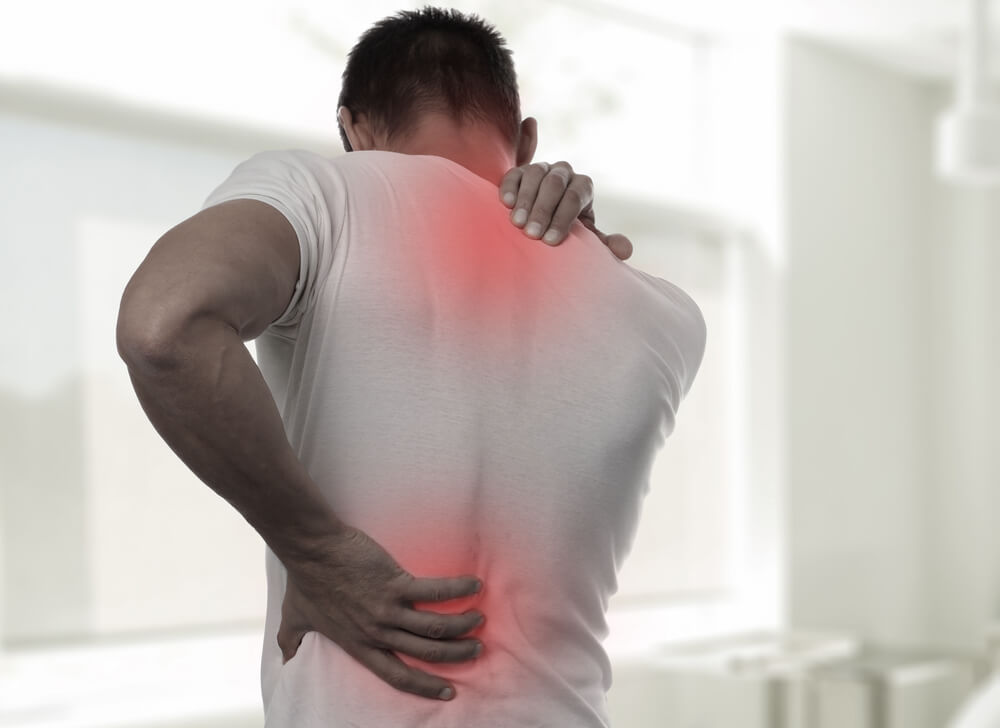
Dorsalgia is a combination of two words, “dorsal” meaning back, and “algia” meaning pain. Therefore dorsalgia means back pain. Dorsalgia generally involves pain in the back or the spine and also includes, mid back pain, lower back pain as well as sciatica pain.
Spinal Anatomy
Before we go on to discuss the types of dorsalgia, it is important to have a better understanding of the anatomy of the spine. The human spinal column is divided into 5 sections or regions of 33 bones collectively called the vertebrae (See the figure below). The 5 regions of the vertebral column are Cervical, Thoracic, Lumbar, Sacrum, and Coccyx. Dorsalgia is categorized into different types based on which of these areas is affected.
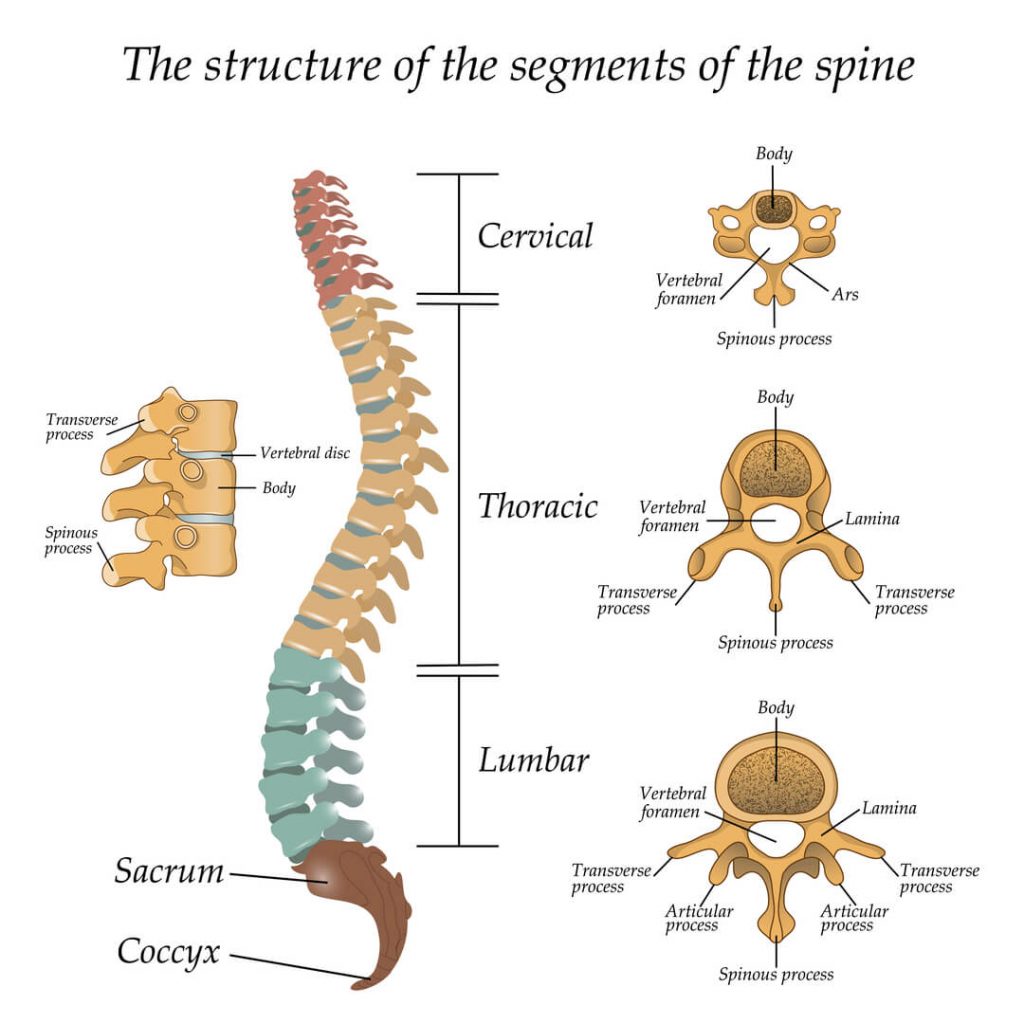
The subsequent section below describes the various types of dorsalgia. You can refer to the diagram above to check the specific region of the spine being discussed. It will help you gain a better understanding of the different types of dorsalgia and which regions of the spine they affect.
Dorsalgia Types
Following are the 6 main types of Dorsalgia:
1. Thoracolumbar dorsalgia:
Thoracolumbar dorsalgia is characterized by upper and lower back pain. Thoracolumbar dorsalgia is pain that occurs in the thoracic and lumbar regions of the spine. These are the 2nd and 3rd sections of the vertebrae as discussed above.
2. Thoracic dorsalgia
It is a rare type of dorsalgia occurring in the thoracic region of the spine. Thoracic dorsalgia is uncommon as the thoracic region of the spine is an infrequently used part of the body. In this type of dorsalgia, patients will usually experience mid-back pain.
3. Cervical dorsalgia
Also termed as cervicalgia or neck pain, cervical dorsalgia occurs when your back pain emerges from the upper or cervical part of the spine. This can happen due to an injury, or whiplash. Furthermore, it can also happen due to stress. In cervical dorsalgia, patients may experience pain anywhere in the neck from the bottom of the head to the top of the shoulders. This pain can range from mild to severe. Mild cervical dorsalgia may cause neck stiffness whereas severe cervical dorsalgia may make it very difficult to move or bend the neck and it could be extremely painful as well.
4. Cervicothoracic dorsalgia
As the name suggests, cervicothoracic dorsalgia is pain the originates from the cervical region and the thoracic region of the spine. The cervical region is the topmost part of the vertebral column whereas the thoracic region is the mid part of the column located between the cervical spine and the lumbar spine. Hence as you can expect, cervicothoracic dorsalgia affects both of these parts with pain occurring in the neck and the mid-back.
5. Lumbosacral dorsalgia
Lumbosacral dorsalgia is a type of dorsalgia in which pain arises from the lumbar region and the sacral region of the spine. This condition causes shooting pain in your lower spine or back.
6. Lumbar dorsalgia
When you experience lower back pain, it may be due to lumbar dorsalgia. In this type of dorsalgia, the pain initiates from the lumbar region or the 3rd region of the vertebral column. It is one of the most common types of dorsalgia.
Dorsalgia Causes
Dorsalgia may emerge due to various reasons. Following are some of the common causes of dorsalgia:
- Herniated discs or bulging discs
- Due to an injury
- Result of overuse
- Stress
Dorsalgia Symptoms
Your symptoms can range from mild to severe back pain accompanied by a burning sensation. Following are the symptoms of dorsalgia:
- Difficulty in carrying out everyday activities like climbing the stairs, etc.
- Sharp or stinging pain in the back or neck
- Pain in the neck or back that together with a burning sensation
- Difficulty in changing your position
- Difficulty or pain when you bend down
- Difficulty in changing posture
- Numbness in upper or lower back
Dorsalgia Diagnosis
Your doctor or orthopedic surgeon will take a look at your condition with the help of certain tests and a physical examination to find out the root cause of your back pain or dorsalgia. Following are the main ways in which dorsalgia may be diagnosed:
1. Physical Examination
Your diagnosis will most likely begin with a physical exam. Your doctor will ask you a set of questions about your leg pain. You may also be asked to do a series of routine tasks like sitting, standing, walking. While you do these tasks, the doctor will closely note your performance. The doctor may also check your reflexes with a reflex hammer as part of your neurological examination.
You are advised to share everything with your doctor from your medical history to back problems occurring in your family, previous injuries, etc. You must describe the pain you are experiencing in detail for instance is it mild, moderate, or severe? does it happen all the time or when you perform a certain activity like climbing, walking, bending down, or sitting? From which area does the pain originate? Is your pain accompanied by a burning or stinging sensation? etc.
2. Medical Tests
Medical or back pain tests for the diagnosis of dorsalgia may include imaging tests and nerve tests:
- Imaging Tests: They are done to take a closer look at what may be causing your back pain. These tests include MRI, CT scan, and X-rays.
- Nerve tests: Neurological testing for dorsalgia may include tests such as Electromyography (EMG) done to monitor electrical activity and predict nerve damage by inserting small needles (electrodes) through the skin into the muscles.
Dorsalgia Treatment
Depending on the severity of your condition, your doctor will likely recommend the most appropriate treatment plan for your dorsalgia.
Less invasive or conservative treatments for dorsalgia are preferred in the early stages. These include physical therapy, medications, and home remedies to treat or manage your back pain.
If these treatments fail to treat your condition or provide you relief then your doctor might suggest more invasive treatments like dry needling. As a last resort, surgery may be needed for the treatment of dorsalgia.
Following are some of the treatments for dorsalgia:
1. Physical Therapy

Physiotherapy or physical therapy is usually recommended as an initial treatment opinion for dorsalgia. Your physiotherapist or chiropractor might hold regular sessions with you and monitor how your body reacts to physical therapy and exercises.
2. Medications

Medications may also be recommended to you along with physical therapy and exercise. NSAIDs like Aspirin, Ibuprofen, etc. can help ease your symptoms and relieve your back pain to some extent. They are available in different forms like pills, creams, gels. Some are available as OTC (over-the-counter) medications while others may require a prescription for purchase. Use them with caution however as NSAIDs have been linked to certain side effects like stomach and heart problems. Only use them as per the instructions of your doctor or healthcare professional.
3. Dry Needling

Dry needling is an emerging treatment that can be used to relieve back pain or dorsalgia. In dry needling, thin filiform needles are injected into a trigger point. The goal of dry needling is to relieve nerve and muscle pain by deactivating the trigger point. Although generally a safe procedure, it is advised to consult your doctor if dry needling is a treatment that suits you. Some side effects of dry needling include soreness in the target area, bleeding, and fainting.
4. TENS (transcutaneous electrical nerve stimulation)
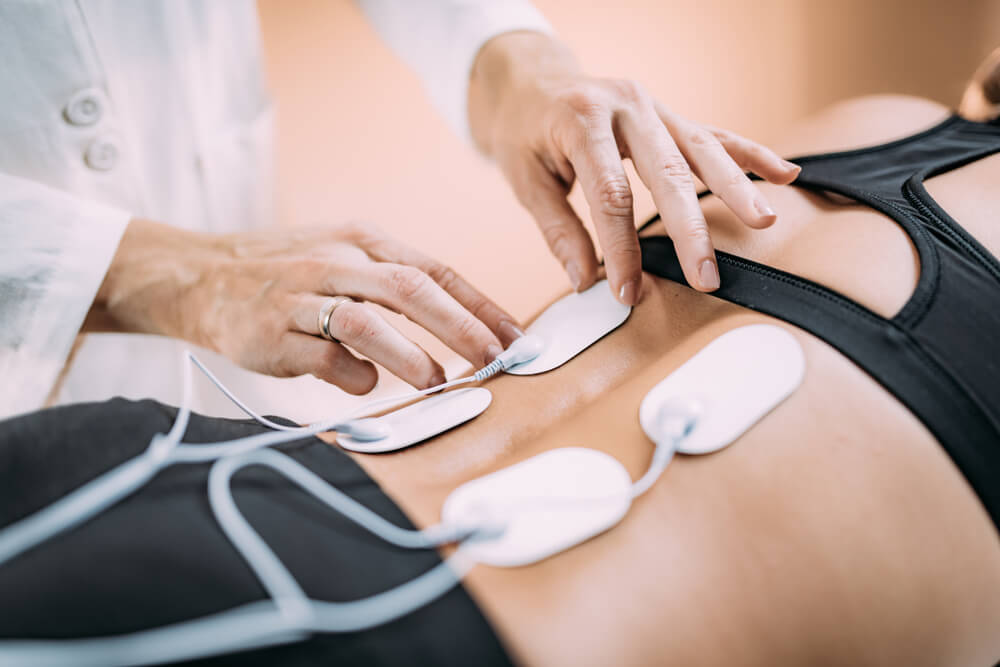
TENS is another treatment that can be effective in relieving back pain or dorsalgia. A TENS unit is a small battery-operated device connected to two electrodes. The electrodes are placed on the skin of the patient and low volume electric currents are then delivered from them in order to provide back pain relief. TENS is considered safe to use although in some cases your doctor might advise you not to go for this treatment. For instance, if you are in the early stages of pregnancy or using a pacemaker.
5. Acetaminophen
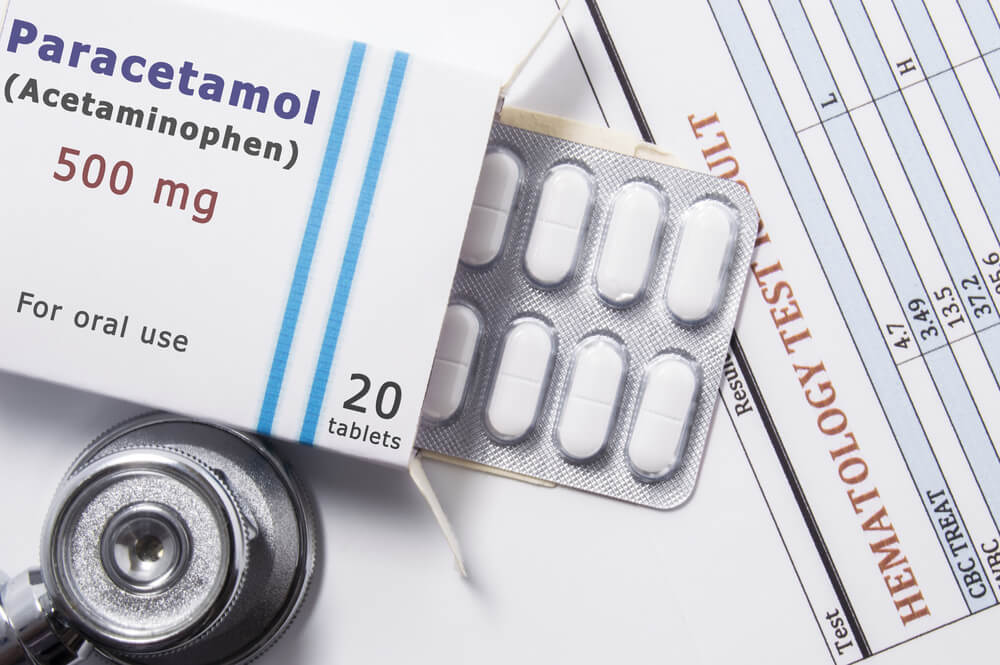
Acetaminophen (Tylenol) or Paracetamol may be used to relieve pain associated with dorsalgia. It is a common over-the-counter medication that may be prescribed by your physician if you are unable to take NSAIDs for back pain. It may be used to treat mild to moderate back pain. The side effects of Acetaminophen include nausea, headaches, itching, rash, and stomach problems. Consult your physician at once if you notice any of these symptoms.
6. Muscle Relaxants
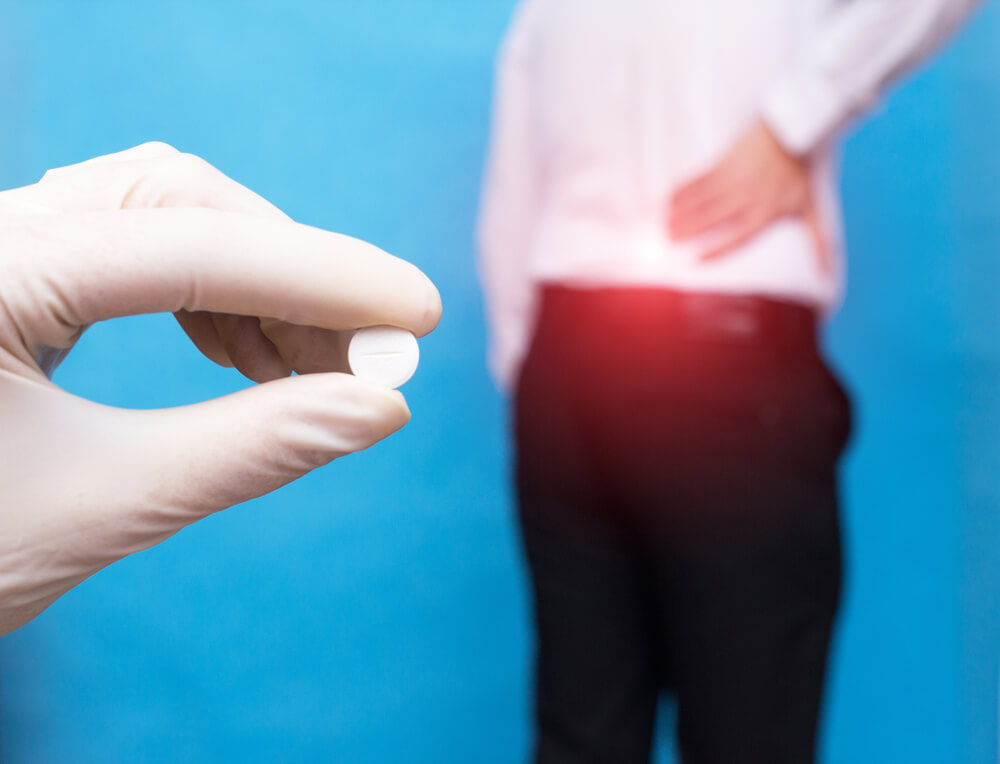
Muscle relaxants may be used to provide short-term relief from back pain and muscle spasms. However, their prolonged use is generally not recommended. Their side effects can include dizziness, fractures, overdose, dry mouth, fatigue, etc. Examples of muscle relaxants include Carisoprodol (Soma), Tizanidine (Zanaflex), Cyclobenzaprine (Flexeril), and Metaxalone (Skelaxin).
7. Surgery

When other treatments have failed to provide you relief from dorsalgia, surgery may be recommended. Types of back surgeries include:
- Discectomy
- Spinal fusion
- Vertebroplasty
- Nucleoplasty
- Artificial disk replacement
- Foraminotomy
Be sure to provide your doctor with all the details of any previous surgeries or surgical complications you may have had in the past. Surgeries for back pain also carry a risk of infection so you need to be wary of that and let your healthcare provider know if you face any problems post-surgery.
Dorsalgia Risk Factors
Following are some of the risk factors of dorsalgia:
- Old age: Older people are more susceptible to dorsalgia
- Smoking: Smokers are at a higher risk of dorsalgia than non-smokers
- Diseases: Arthritis and cancer can also lead to back pain
- Posture: A poor posture has also been associated with dorsalgia
- Lack of exercise: People who don’t exercise are at a higher risk of back pain due to unused back muscles
- Psychological disorders: Depression, anxiety, and excessive stress can take a toll on you and may cause dorsalgia
- Being overweight: Obese people are at a higher risk of back pain, muscle strain, and joint pain.
Dorsalgia Prevention
Following are some tips to prevent dorsalgia or back pain:
- Excercise
- Maintain a normal weight
- Improve your posture
- Quit smoking
- Eat healthy
- Reduce stress





